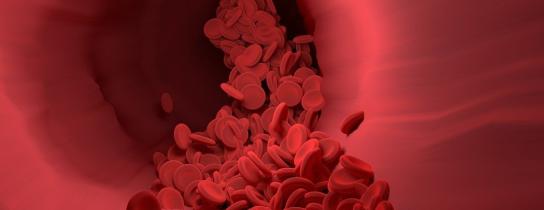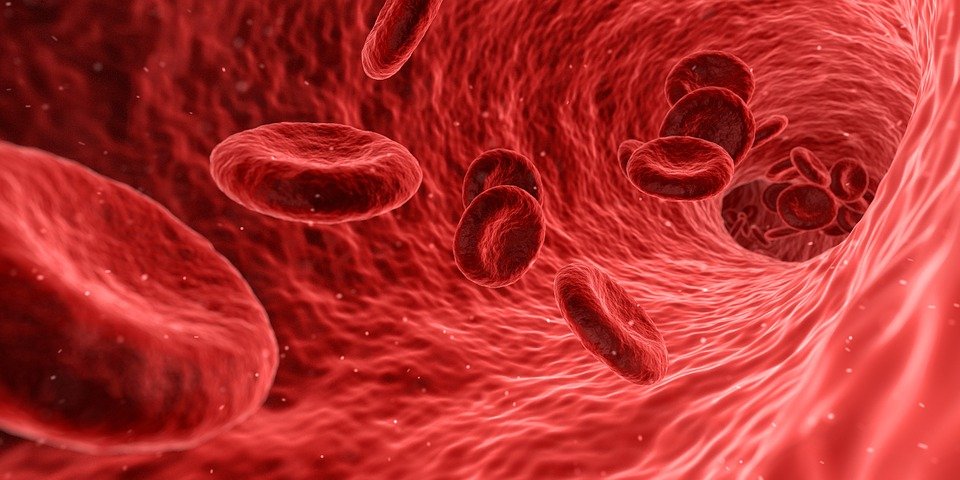
Everything You Need to Know About Blood Clots: Causes, Symptoms, and Treatment
While blood clots can help your body heal itself, they aren’t always so beneficial; when blood clots show up inside arteries and veins, they can cause “bottlenecks” that can prevent or limit blood from flowing to essential organs. In other words, blood clots can be bad news.
Just what is a blood clot, and how do you know whether or not you have one? Read on to find out more about blood clots, their types, and how you can detect and treat them. While blood clots may be dangerous, some are usually easy to diagnose and treat.
What Is a Blood Clot?
A blood clot is almost exactly what its name implies: a solid “clot” or “clump” of blood. While blood is usually liquid, it can turn solid to help stop bleeding in the case of cuts or other injuries. Whenever you get an injury that results in bleeding, you’ll notice that the injury (usually!) stops bleeding after some time. This effect is blood clotting in action.
Of course, blood clots can only handle certain sizes and extremities of injury—especially considering that blood cells are extremely small. As a result, blood clots are only truly effective for stopping small, “easily clotted” cuts and scrapes. By contrast, injuries with major bleeding—also known as hemorrhages—often require some other means of stopping or limiting the flow of blood, such as a tourniquet.
Sometimes, however, blood clots can form even when there isn’t an injury. In these cases, the blood clots happen within blood vessels, particularly your veins and arteries. While almost everyone might experience some degree of blood clotting inside their blood vessels, there are rare cases where clots can be large enough to limit or prevent blood flow, which can cause several health complications.
In even rarer cases, a blood clot can dislodge from the wall of a blood vessel and travel through the bloodstream. The blood clot ends up lodging somewhere else in the bloodstream, which often leads to severe and/or deadly health complications—especially if the clot lodges somewhere around the brain or the heart.
Blood clots can come in many types. In the next section, we’ll explore several types of blood clots and how exactly blood clots are categorized.
Types of Blood Clots
A blood clot is usually categorized based on two major factors: 1) Whether the blood clot is moving or stationary, and 2) where the blood clot is located in the body. Moving or stationary blood clots are known as embolus and thrombus clots, respectively, while a clot located in an artery, for example, is known as an arterial clot.
Thrombus Clots
A thrombus clot is a completely stationary blood clot, it doesn’t move. Thrombus clots typically build up inside the walls of blood vessels such as veins and arteries. While almost every blood clot starts as a thrombus clot, they can sometimes dislodge and travel through the bloodstream. Once dislodged and moving, the blood clot is recategorized as an embolus clot.
Thrombus clots are the most common general category of blood clots, especially considering that the vast majority of blood clots technically begin as thrombus clots. Thrombus clots are usually responsible for symptoms where blood flow is limited or blocked to a specific area, due to the “bottleneck” effect they create in the bloodstream.
Embolus Clots
An embolus clot is a blood clot that is moving through the bloodstream. Depending on its movement and location, embolus clots can sometimes lodge and dislodge periodically in certain places; without a solid connection to the inside of a blood vessel, a moving blood clot is always an embolus clot.
While both thrombus and embolus clots can pose significant health risks, embolus clots are notably more dangerous than thrombus clots. Part of the reason is that embolus clots are far less predictable than thrombus clots; a thrombus clot stays in one location and is much easier to treat as a result, embolus clots flow unpredictably. Since many factors can affect the flow of an embolus clot, such as increases in blood pressure caused by underlying conditions, etc., embolus clots are often harder to treat and much deadlier.
Whether stationary (thrombus) or mobile (embolus), blood clots are also categorized based on their blood vessel of origin. The most common types are arterial (artery) and venous (vein) clots.
Arterial Clots
An arterial clot is a blood clot that forms in an artery. Arteries are the blood vessels primarily responsible for carrying blood away from your heart and, as a result, they provide the fastest “travel time” to vital organs. Because of this, arterial clots directly limit blood flow to vital organs, which can cause severe organ and tissue damage in the affected areas. Typically, the most common affected areas are around the legs and feet, with rarer cases occurring in the heart and brain. Arterial clots in the heart and brain are common causes of heart attacks and strokes, respectively.
Venous Clots
A venous clot is a blood clot that forms in a vein. Veins vary in size throughout the body but are significantly smaller than arteries. While a bit of an oversimplification, you can almost think of arteries as the trunk and major branches of a tree, while the veins are the smaller branches; blood flows through the arteries and “branches” off into veins, which distribute blood—and, therefore, oxygen—to connected organs.
Due to their smaller size and comparatively reduced blood flow, veins tend to develop clots much more slowly than arteries. However, their slow growth can also make them harder to detect, and this often results in symptoms different from those of arterial clots.
There are three major types of venous clots: superficial venous thrombosis, deep vein thrombosis, and pulmonary embolisms. Superficial venous thrombosis refers to stationary blood clots (thrombus clots) forming near the surface of the skin, whereas deep vein thrombosis refers to stationary blood clots forming in veins deeper inside the body.
Pulmonary embolisms, by contrast, are moving blood clots that eventually make their way into the lungs (the major part of the pulmonary system). These clots are considered a medical emergency and can be extremely deadly.
Signs of a Blood Clot
Blood clot symptoms vary depending on where the blood clot originated. As a result, both arterial and venous blood clots have unique major symptoms, whether or not the clot is stationary (thrombus) or moving (embolus)—of course, separate complications can (and do) arise in the case of an embolism.
Arterial Blood Clot Symptoms
Arterial clots are largely responsible for limiting blood flow to major parts of the body, often the legs and feet. As a result, patients with arterial clots will often experience the following symptoms in the affected areas:
- Cold, pale arms or legs
- Cold, pale hands or feet
- Numbness, pain, and/or tingling in the affected limb(s)
- Muscle weakness in the affected limb(s)
Venous Blood Clot Symptoms
True to their name, venous blood clot symptoms are most noticeable around the affected veins, especially those closest to the surface of the skin (superficial venous thrombosis). Symptoms of venous blood clots can include:
- Tenderness, pain, or “hardness” in the affected vein
- Redness, swelling, and/or pain in the skin around the affected vein
Other forms of venous clots, particularly deep vein thrombosis and pulmonary embolisms, can also cause non-superficial symptoms such as:
- Swollen limbs
- Cramping, pain, and/or tenderness in affected limbs/areas
If you have chest pain or difficulty breathing along with the above symptoms, call 911 immediately. This combination of symptoms is often the result of a pulmonary embolism, which can be deadly.
Other Blood Clot Symptoms
Since blood clots can cause health complications in almost any area of the body, they can cause a wider variety of symptoms, depending on the specific area affected by the clot. For example, a blood clot in veins leading to the stomach or other parts of the digestive tract can cause nausea and stomach cramps, while a clot in the veins leading to the brain can cause seizures and strokes.
Click here for a complete list of blood clot symptoms categorized by affected area. You should make an appointment to have a vascular specialist or cardiologist assess your symptoms to determine whether they’re the result of a blood clot.
What Causes Blood Clots?

While blood clots are usually caused by blood itself to stop bleeding, they can also be caused by certain underlying health conditions. A clot is formed when red blood cells, also known as “platelets,” combine with proteins in the blood to produce a solid, sticky mass. This mass, known as a “clot,” is your body’s natural way of plugging holes in blood vessels, such as those caused by a cut or injury.
Of course, blood clots forming as the result of an injury typically pose little threat—if anything, they’re a crucial part of the healing process. However, blood clots can also form in the absence of injury, and this is often the result of any number of health conditions that result in an excess of blood cells.
Health conditions that can lead to blood clots include:
- Cancer
- Diabetes
- Immobility
- Obesity
- Vasculitis
- Heart Failure
- Atherosclerosis (hardening of the arteries)
Your primary care physician or specialist can help you determine whether you’re at greater risk for a blood clot.
Blood Clot Prevention

While “healthy” blood clots will form as a natural response to bleeding, you can avoid “unhealthy” blood clots by maintaining a healthy lifestyle and/or seeking treatment for underlying conditions that may increase your risk of developing a clot.
Because many of these underlying conditions, such as immobility and certain types of diabetes, are often caused by unhealthy lifestyle choices, maintaining an active, healthy lifestyle is the best way you can prevent blood clots.
Blood Clot Treatment
Blood clots are typically treated with a blood-thinning regimen. In most cases, blood thinning is a multi-part treatment involving a short dose of a fast-acting medication followed by regular injections and oral dosages of blood clot medication such as warfarin. In serious cases, blood clot surgery may be necessary to remove blood clots that pose immediate health risks.
Thankfully, blood clot treatment is usually very effective at eliminating most blood clots. For more information on blood clot diagnoses and treatment options, visit crystalrunhealthcare.com/vein-center. The specialists at Crystal Run Healthcare offer comprehensive care for blood clots and other health ailments. You can book an appointment directly online or by calling 845-703-6999.

 Optum Radiology at Crystal Run Healthcare
Optum Radiology at Crystal Run Healthcare Request medical records online
Request medical records online